No products in the cart.
 Mauka (Mirabilis expansa)
Mauka (Mirabilis expansa)
Overview
- Mauka is an uncommon root crop with a very small distribution in the Andes.
- This crop is easy to grow in the Pacific Northwest and in many other parts of the US.
- Mauka roots are usually white or yellow and can reach several pounds with a long growing season.
- The plants will grow as a perennial where the soil does not freeze more than an inch deep.
- The roots are eaten cooked and have very dense flesh with a cabbagey flavor.
- The leaves of mauka are also edible, although some people find them irritating.
- The crop can be propagated both from seed and caudices.
About mauka
Description
Mauka (Mirabilis expansa), pronounced MAO-kah, is one of the least known domesticated root crops. It is a member of the family Nyctingaceae, along with the four o’clock flower. It is also commonly known as chago and miso.
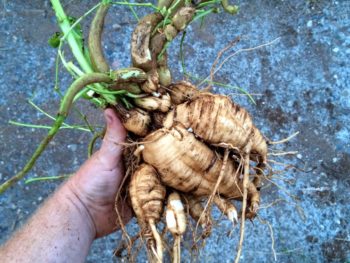 It is a crop distinguished by its rarity; it was unknown to science until the 1960s (although science was obviously late to catch on, since the crop had already been domesticated for thousands of years). At that time, mauka survived in only a few scattered garden plots in Bolivia, Peru, and Ecuador. What we don’t know about mauka far exceeds what we do know, but if you are interested in trying something unusual, you can learn along with everyone else and contribute to the body of knowledge about this plant.
It is a crop distinguished by its rarity; it was unknown to science until the 1960s (although science was obviously late to catch on, since the crop had already been domesticated for thousands of years). At that time, mauka survived in only a few scattered garden plots in Bolivia, Peru, and Ecuador. What we don’t know about mauka far exceeds what we do know, but if you are interested in trying something unusual, you can learn along with everyone else and contribute to the body of knowledge about this plant.
Mauka is a fairly large plant, growing up to six feet (1.8 m) in diameter and three to four feet (0.9 to 1.2 m) high in a single growing season. Stems are long and unruly, so the plant has a sprawling habit. The root, which is the primary edible part, is like a dense cluster of fat carrots, weighing 5 pounds (2.3kg) or more if given sufficient time to grow. Flavor is subjective, but the flavor of mauka root is a bit like a combination of potato and cabbage. The texture is denser than potato, but still familiar and the flavor is a little bit more savory with a mild cabbagey aftertaste.
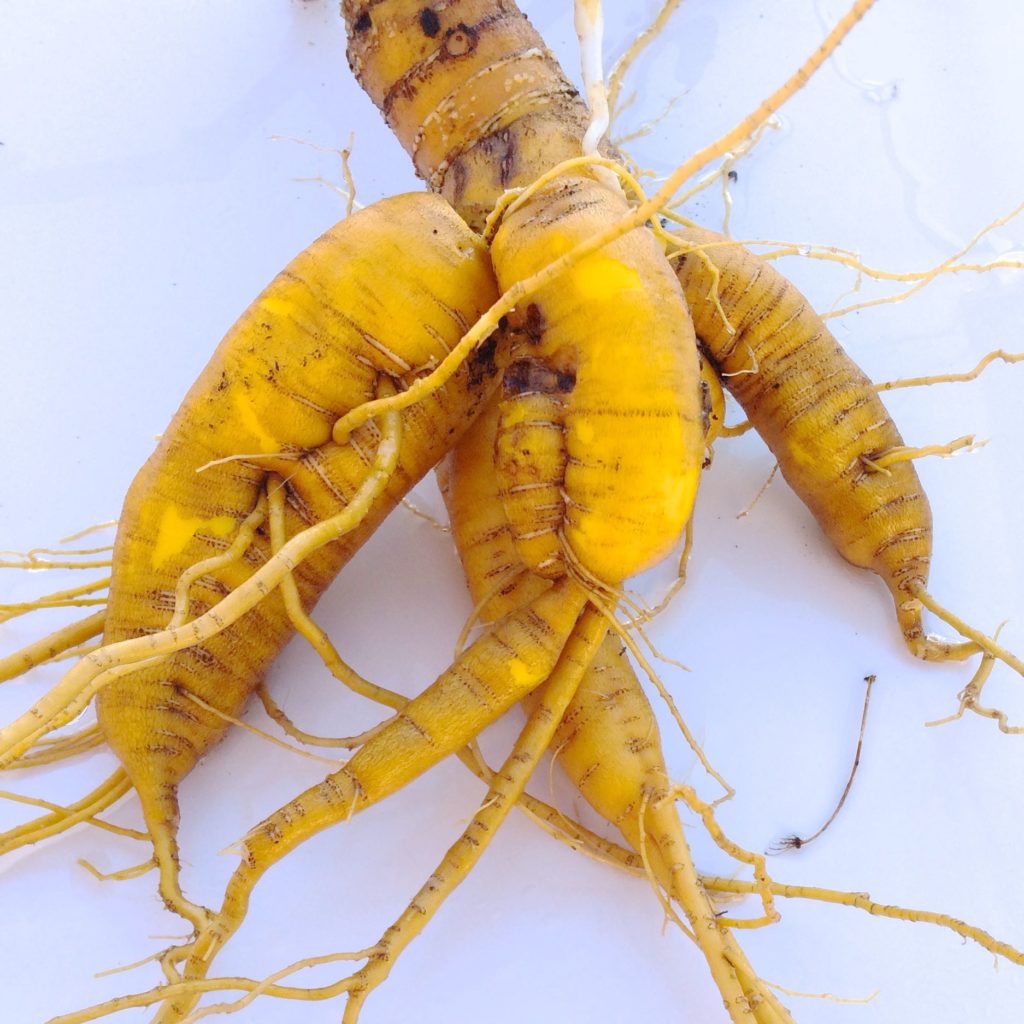
Mauka appears to be very promising for cultivation in North America, as it is more heat resistant than many of the Andean roots and tubers and is also not a short day plant for tuber production (although it is for flowering; more on that later). It is not frost resistant, so it will die back to the ground after the first frost, but the root appears to be hardy to about USDA zone 7b. In colder climates, it can be dug and kept in cool storage for replanting in the spring. Mauka is probably worth attempting in all but the hottest and driest climates.
There may be as many as 30 varieties, although they have not been well studied and duplications are likely. Two varieties are commonly available outside the Andes.
History
Mauka was a staple food of at least one tribe that was conquered by the Incas (NRC 1989). The Inca practice was to dislocate potentially resistant populations to other areas of the empire in order to weaken their solidarity. These relocated peoples took their crops with them, so mauka may have been spread from the area of Cajamarca, Peru to Bolivia and Ecuador as part of such a relocation (NRC 1989). Given the chaos generated by the Spanish arrival in the New World, the Inca relocation policy may have actually served to preserve greater diversity in this crop than otherwise would have occurred.
The crop was rediscovered and first described in the scientific literature in 1965, after it was identified near Yorkarguaya in Bolivia (Rea 1965).
Nutrition

All parts of the plant are edible. Stems are tough and can be rendered edible only by long, slow cooking. The leaves can be used as a salad green, but some people may find them irritating due to calcium oxalate content. I think that they are perfectly palatable, but some people find them bitter or astringent. Go easy on the mauka leaves until you discover which camp you’re in. Mauka leaves may contain as much as 17% protein and therefore could be valuable as animal feed (Kaskova 2011).
Nutritional analyses of mauka are not in close agreement, possibly as a result of using different varieties. Fresh mauka root has been reported to have between 134 and 162 calories per 100 grams (Klaskova 2011). It is low in sodium, but high in potassium.
As with the leaves, mauka root contains calcium oxalate. The roots and stems should probably not be eaten uncooked, although it would be very difficult to do so anyway because they are so dense.
Cooking and Eating
Cleaning the roots can be a little tedious, as they clump and fold in ways that trap soil. Typically, it is best to cut into chunks and then peel. Every individual root has a thin core that is woody and inedible. The core is easily removed after cooking. The simplest method of preparation is to boil for about an hour.
If you have any mouth or throat irritation after preparing mauka root this way, try boiling for the same period of time, but with a change of water halfway through. Most people will probably not need the water change, but some are quite sensitive to the astringent substances in mauka. It is possible that environmental conditions, such as intensity of sunlight or drought have an influence on the levels of astringent substances, so the plants may contain less of them in the cool and cloudy Pacific Northwest.
You can cure your mauka roots by exposing them to sunlight for a week or so and this should eliminate any of the astringent substances, rendering your mauka sweet. I haven’t found this necessary and routinely harvest mauka roots and boil them up the same day without any irritation or digestive upset, but every once in a while I’ll get a bite that seems a little spicy.
If you boil your mauka root, try drinking the cooking water after it cools; it can be surprisingly tasty, particularly if you have sweetened the root in the sun.
Cultivation
Climate Tolerance
Mauka grows in difficult environments in the Andes, where temperatures may range from nearly freezing to the low 80s F (27 to 30 C) throughout the growing season. It also has to contend with strong winds and dramatic changes in humidity.
This difficult proving ground has prepared mauka to handle a wide range of conditions. It likes regular watering but isn’t much troubled by sun or wind. Mauka appears to perform well throughout the Pacific Northwest, both west and east of the Cascades. If you live in a really hot climate, you might give it some afternoon shade. I really don’t have a lot of experience to draw upon here, but I know several people who are growing this plant in Southern California, so it can handle some heat and drought.
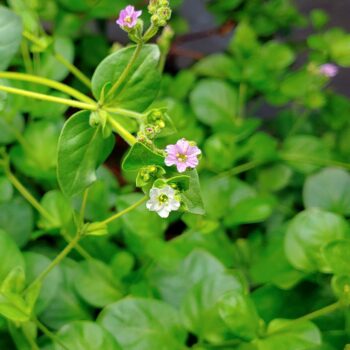
Photoperiod
Mauka is photoperiod dependent for flowering, but not for root growth, so it can be grown at any time of year. Flowering appears to be triggered by short days of increasing length, so it can begin flowering in late December or January and may continue flowering until day length begins to shorten again six months later.
Soil Requirements
Optimum soil conditions for mauka have not been established, but it appears to tolerate acidic to neutral soils as is the case with most of the Andean roots.
Propagule Care
Little is known of mauka seed life or storage conditions. Seeds appear to be unchanged in germination rate (about 90%) after three years at room temperature but, like most seeds, they are probably best stored at cool temperatures above freezing to maximize storage life.
Mauka caudices are fairly robust and can usually be stored for two or three months at temperatures below 50° F (10 C) and high relative humidity. The conservative approach is to pot them until planting time.
Planting
In my experience, you can probably start mauka plants any time that you can give them at least four months to grow. In that time, they should produce a root of sufficient size for overwintering.
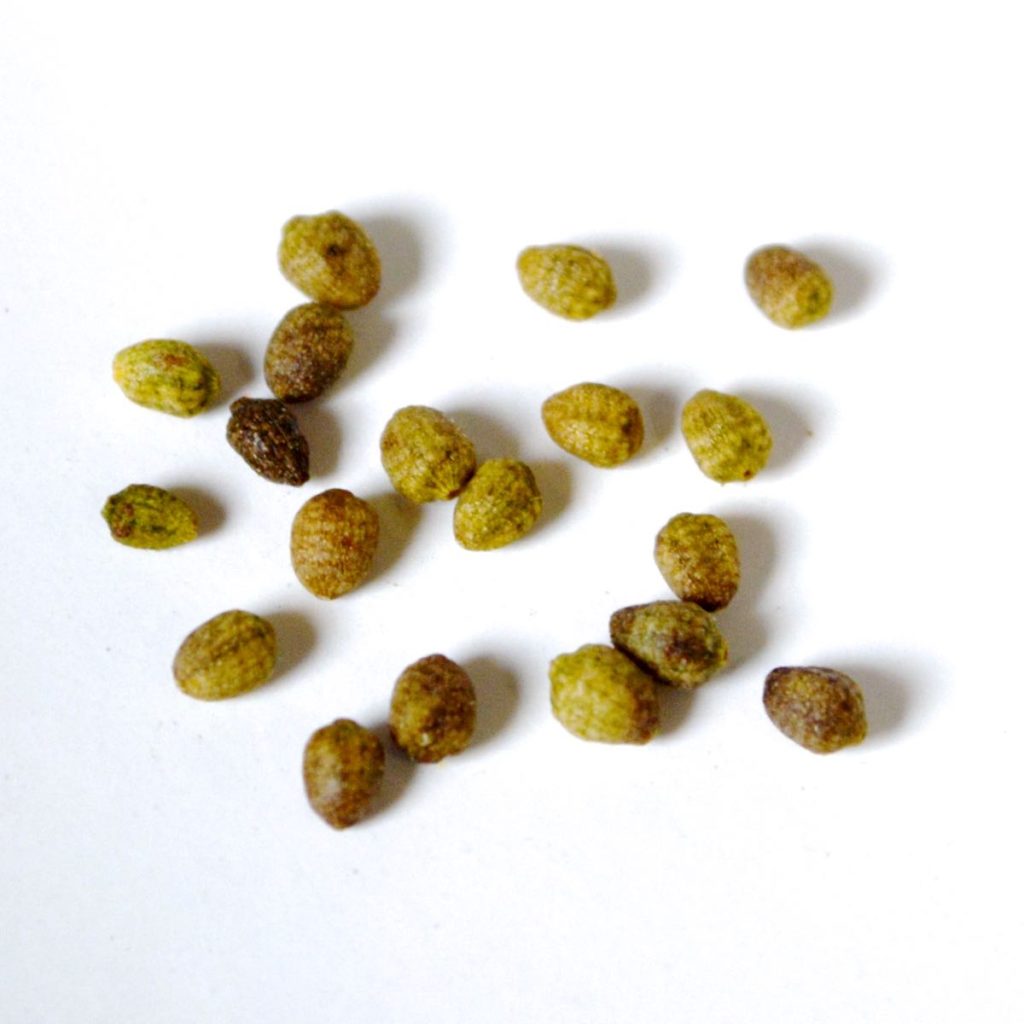
Mauka is a big, sprawling plant, so give it some space. I plant mauka on three foot (0.9 m) centers in row with five feet (1.5 m) in between rows. In Bolivia, the plants are spaced on roughly 2 to 2.5 foot (60 to 75 cm) centers (Rea 1965).
Starting from Seed
If you start your seeds about six weeks before your last frost, you should have seedlings of transplant ready size and can make use of the whole growing season.
Surface sow the seeds. Light appears to aid germination. Keep the soil moist. Apply bottom heat at about 70 to 80°F (21 to 27C), if you are able, otherwise a warm windowsill would probably be fine. In a week to 10 days, you should see germination.
In a germination test of 50 fresh seeds, started in a flat of potting soil with 12 hours of light and bottom heat at 80° F (27C) followed by 12 hours without, I saw the first germination take place on day 5.
Mauka seed may germinate at surprisingly low temperatures. I have seen a report of 100% germination in seeds that were stratifying in a refrigerator for roughly two weeks. This bodes very well for direct sowing of mauka seed.
Mauka seedlings can be planted out when they are three to four inches (7.5 to 10 cm) tall and will rapidly grow to be sprawling plants up to five feet (1.5 m) in diameter in the first growing season. Unfortunately, the roots don’t grow quite as quickly and seedlings appear to require two years to produce a root worth harvesting. Three years is probably even better, as the roots and the lower stems can eventually become very large, yielding 10 pounds (4.5 kg) or more.
Starting from Caudices
In mild climates, caudices can be started at almost any time of year. Planted a couple of inches (5 cm) deep in damp soil, they may survive through the winter to sprout in the spring. This is not the recommended method, but illustrates that the caudices are pretty tough.
Plant the caudex vertically, with the bud just at the surface of the soil. Ideally this would be done in the spring, but caudices will establish at any time of year if given regular watering. If you are expecting frost, put a couple inches (5 cm) of mulch over the top; otherwise, it is better to let the bud get some light.
Management
Mauka needs little attention during the growing season. It is a tough plant and its rampant growth is effective at suppressing all but the worst weeds. You may find that you need to prune it to protect neighboring plants.
In frost-free climates, mauka is perennial and you will probably need to prune it. In the Andes, plants are cut back to three or four nodes per stem in the spring, which appears to stimulate the production laterals and new foliage.
Companion Planting
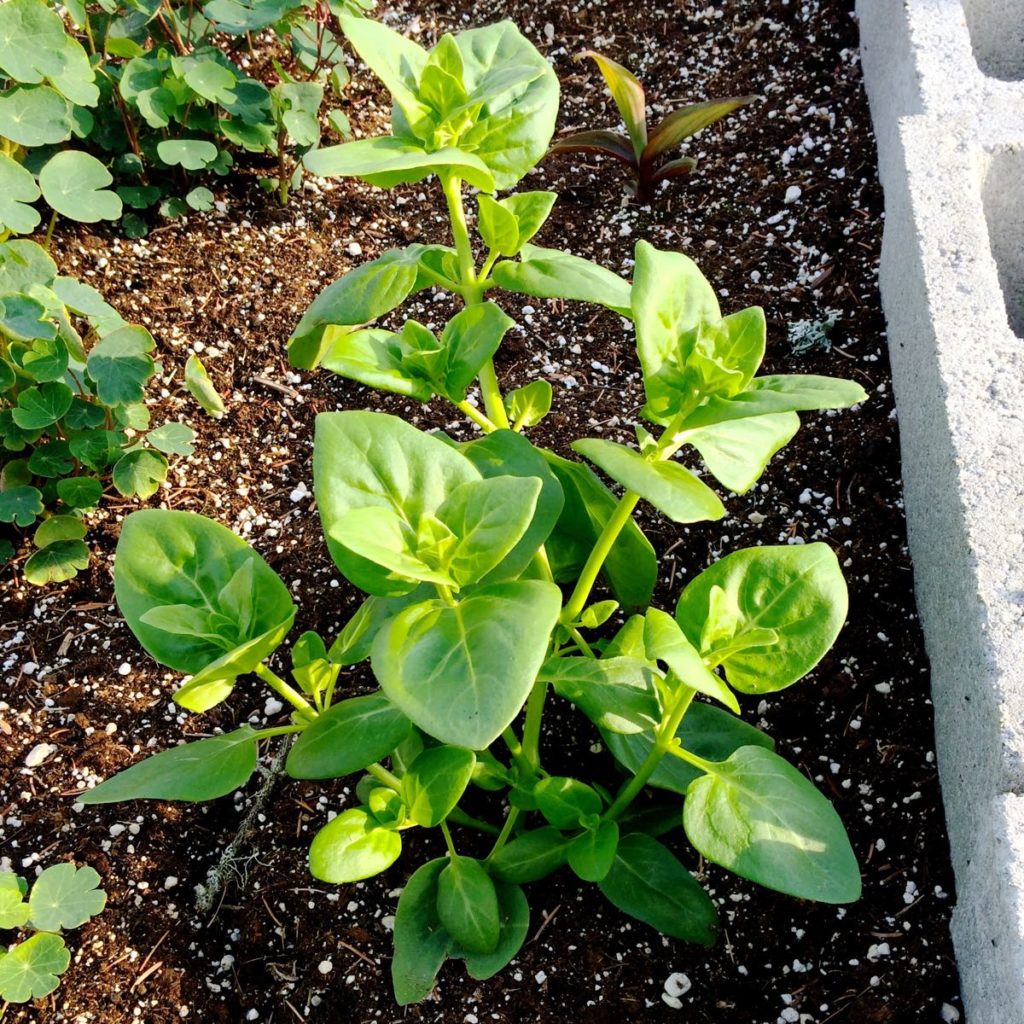
It is hard to imagine good companion plants for mauka. It will overgrow whatever grows close to it, unless given very tall companions, but they would shade it and mauka needs full sunlight to produce good yields.
Growing as a Perennial
Unlike most root crops, mauka is traditionally grown as a perennial. In climates where the ground doesn’t freeze to significant depth, roughly USDA zones 8a and warmer, mauka can be left in the ground for several years. During this time both the roots and the lower stems will grow very large, providing a much better harvest than can be obtained as an annual. The aerial plant will die back in freezing weather, but a heavy application of mulch at the end of the growing season can protect the roots and stem caudices.
Container Growing
Mauka grows surprisingly well in containers, given its large size. It will produce a root that is proportional to the size of the container. Roots from plants grown in 5 gallon (19 l) buckets reach a maximum of about a pound.
Propagation
Mauka is traditionally propagated both from caudices and seed.
Vegetative Propagation
Cuttings and offsets are traditionally the most common methods for propagating mauka. Any portion of a mauka plant roots relatively easily. The lowest portion of the stem coming from the crown is the easiest part to work with. These sausage like caudices are very durable and contain a lot of energy for the plant to use while getting established. Stem cuttings don’t ship very well, but caudices do.
I have literally scattered caudices in a bed, shoveled some soil on top and otherwise ignored them and had new plants within a month. It may not be that easy in every climate though, so a bit of care is a good idea. You can also root upper parts of the stems; take portions of a few nodes/leaves and root in damp soil. After four to six weeks, they should be ready for transplant.
Sexual Propagation
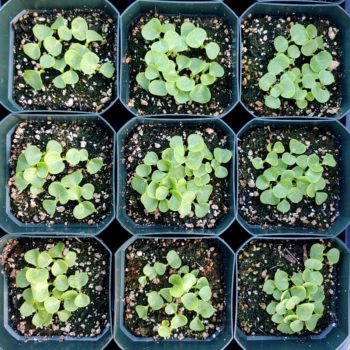
Mauka sets viable seed and yields of several hundred seeds per plant should be easy to achieve. The seed has a good germination rate and the seedlings are vigorous and regular. Mauka is probably diploid (it has 58 chromosomes and other members of the genus with 58 chromosomes are diploid) and self pollinated seedlings appear to be true to type. I suspect that there is very little genetic diversity in the two mauka varieties available in the USA, so seedlings are probably the same variety as the parent if self-pollinated. I don’t know that for certain, but I have observed no, or perhaps very minimal, differences in traits between seedlings.
Flowering appears to be triggered by short day conditions and may occur in fall or late winter/spring. Plants that are at least three months old will flower when daylight falls below 12 hours. Here, mauka begins to flower in early December and continues well into June. The cultivars are somewhat different in the timing of flowering with ‘Rojo’ flowering mostly in the first half of that period and ‘Blanco’ more in the second half. I have also observed that flowering is delayed, but ultimately heavier and longer lasting, when the plants are severely pruned in early winter. The pruned plants regrow over the winter and begin flowering around March, continuing through August. This is probably an indication that flowering takes place primarily on new growth.
To collect seed, you must either live in a frost free climate or grow your mauka in protected circumstances, like a greenhouse or cold frame. You can also trick mauka into flowering by placing containers in blackout conditions for 13 hours per day for about a month (Smith 2010, Oct 4). I have collected as many as 480 seeds from a single plant, but over a period of four months, so just a few seeds per day.
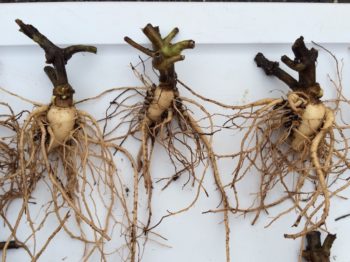
Mauka self pollinates, so you can expect a seed crop even from a single plant, although it is possible that seed set is improved when you have more than one plant and the appropriate pollinators. What are the appropriate pollinators? Mauka flowers open at night, so not bees. Moths are one possibility. Non flying nocturnal insects may also contribute.
The two commonly available varieties are compatible and can be crossed by hand pollination or by natural cross pollination, which will yield new mauka varieties. I suspect that not much will be achieved by crosses between the two available domesticated varieties, but you never know. I have made crosses and grown out some seedlings, but until 2018 I wasn’t sure if these crosses were successful. It is a lot of work to emasculate very many of the tiny mauka flowers and I don’t know when anthesis occurs, so I suspect more of my attempted crosses were self pollinations than crosses. Most of the seedlings had white flowers but I finally got a plant from a seed collected on mauka blanco that had a pink flower, so that one must be the result of a successful cross. It will be interesting to grow self pollinated seedlings from varieties that are confirmed crosses. The progeny of these varieties should be more diverse than those of the presumably inbred heirloom varieties.
When fully dried, there are approximately 150 mauka seeds per gram.
Problems
Pests
I have seen very little pest interest in mauka. Many insects chew the leaves, but none do any significant damage. Aphids can become a problem on mauka and may be responsible for transmitting a virus that appears to be endemic to North America.
Rodents really like mauka roots and will chew right down through them, leaving you nothing but a mauka root shaped hole in the ground. Because of this, I no longer leave roots in the ground over the winter.
Diseases
I am not aware of any published information about diseases of mauka at this point. Our original, clonally propaged plants tested positive for a caulimovirus, which did not cause particularly noticeable symptoms – perhaps just a bit of yellowing between veins. Plants grown from seeds of the infected plants tested negative for the virus.
Mirabilis jalapa, the four o’clock, a widely distributed relative, is commonly affected by several viruses. A bacterial blight also occurs in warm, high humidity conditions (Koike 2003). It may be a good idea to avoid growing mauka and M. jalapa in close proximity, since it would not be too surprising if they are vulnerable to some of the same diseases.
Defects
Nothing to report at this point.
Crop Development
Mauka’s development needs are not as urgent as many of the Andean root crops. It would benefit from breeding efforts to produce day neutral flowering, which would make seed production and breeding simpler. Reducing the level of astringent substances and eliminating the woody core from the roots would improve edibility. A focus on increasing the size and improving the texture of the basal stems might allow the plant to function as a truly perennial vegetable, where the stems are harvested and the root is left in the ground.

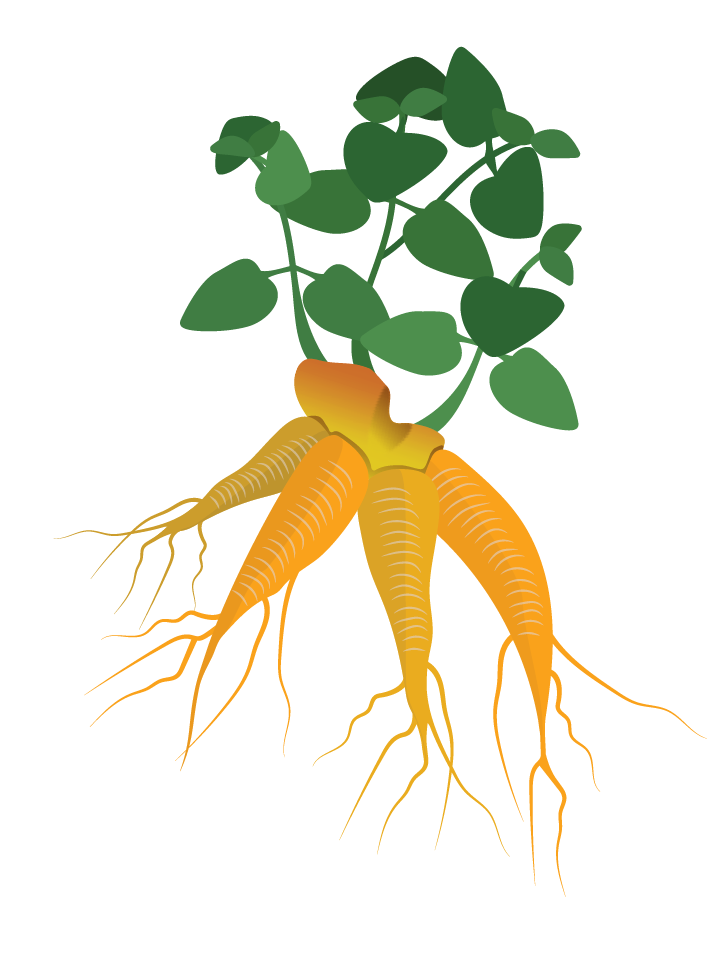
http://cipotato.org/wp-content/uploads/2014/09/26-Aspec_etnobot_chago_miso.pdf
Greetings from Perú
Welcome and thanks for the interesting link! I hadn’t seen that before.
Hi Bill. Since caudices aren’t an option for me, when will Mauka seeds be available again?
If they are available, it will most likely be April/May. As long as we don’t have an unusually cold winter, I should have some.
I’d be interested in getting some seeds. Where might I go to try and find them?
I read an article that stated that corn is good for companion planting. Good to keep the biodiversity and pests from overpopulation.